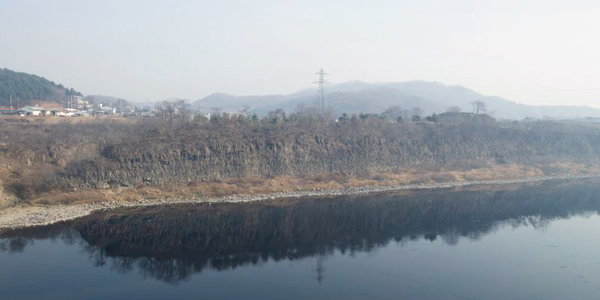NORTHEAST ASIAN HISTORY FOUNDATION 07/2010
-
Lee, Seong-je Research Fellow, Research Department
 Dangpo-seong
Dangpo-seongBack when it was difficult to see traces of Goguryeo history in person, we only got occasional glimpses of Goguryeo fortresses in media reports or illustrations in academic texts. Korean scholars had surveyed the fortresses on the flatland along Imjin River and the fortification on Mount Acha. Nevertheless, those fortresses had only been examined by a small number of researchers and relevant officials and were not well-known.
I had an experience related to Goguryeo fortresses that was a missed opportunity. Dangpo-seong is one of the fortresses along Imjin River. When I first visited the fortress a long while back, the fortress was lying bare as it had just been excavated. Even the vertical cross section of the pillar hollows, which will be discussed in detail, was in plain view. However, I did not think much of it. I did even take a single photo.
Although it is not big, Dangpo-seong is a significant site in the study of Goguryeo fortresses. The fortress is significant not only because it has to do with Goguryeo's southward advance. Discovered on the site are pillar hollows [柱洞]—extending all the way down to the very foundation of the fortress—behind the lower wall at the top of the fortress. Pillar hollows, also discovered in key Goguryeo fortresses in Ji'an and Huanren in China, have been considered a defining characteristics of early Goguryeo mountain fortresses. Regarding their purpose, some said they were used for anchoring defensive weapons and others argued they had something to do with the architecture of the ortress walls.
Through the survey of Dangpo-seong, it was discovered that pillar hollows were used in Goguryeo fortress walls even in the 4th and 5th centuries. That is, it had become clear that pillar hollows were not constructs characteristic of a set time period. In the meantime, no pillar hollows were found in Horogoru-seong, which is located in a site very similar to that of Dangpo-seong. Why was it that only Dangpo-seong, among all the Goguryeo fortresses along Imjin River, needed those pillar hollows? The answer to this question may provide a clue for a great understanding of the unique construction and defense capabilities of Goguryeo fortresses.
Furthermore, Dangpo-seong should be helpful in determining the origins of ancient fortresses in the eastern regions of Jilin province, China. In Yanbian in eastern Jilin, there are a few dozen ancient fortress walls that remain standing. Given that the area was the birthplace and center of Balhae, most of these fortress walls were thought to have been constructed during the Balhae period. That is, it was generally assumed that very few had been set up by the people of Goguryeo.
A field survey located a riverside fortress on flatland, similar to Dangpo-seong, along the northern end of Duman River, which is a border area between China and North Korea. The fortress was designed to maximize the defensive capabilities rendered by the steep cliff carved by volcanic activity above and the flowing river below. In terms of construction and geographical conditions, the fortress is very similar to Dangpo, Horogoru, and Eundaeri fortresses along Imjin River. Nearby, however, there are also fortresses on flatland built during the Balhae era. Therefore, it is a site that sheds light on the probable progression of historical succession and expansion from Goguryeo to Balhae.
Even though I recently published a paper on the subject, Goguryeo fortresses remain a challenging topic for me. Whenever I go on field surveys, I try to make thorough observations and notes to prevent the recurrence of my regrettable first encounter with Dangpo-seong. Nevertheless, I always return with a sense that I needed to have done more and learned more. The fortresses of Goguryeo were defense centers, junctures linking central Goguryeo with outlying provinces, and important sources for the understanding of traffic flow between different areas. I hurt my knee when a mound of stones crumbled under my feet on one of my field surveys of a mountain fortress. My knee, which is still sore, is testament to my passion for Goguryeo fortresses.


